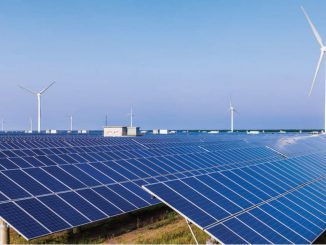
In a recent interview with Power Line, Shivanand Nimbargi, managing director and chief executive officer, Ayana Renewable Power Private Limited, talked about the notable recent accomplishments in the power sector, the strides made in energy transition, and the future outlook for the power industry. Edited excerpts…
How has the sector evolved over time? What have been the key achievements?
The evolution of the power sector in India has been truly transformative, reflecting our nation’s commitment to a greener and more sustainable future. In a span of just nine years, we have added an impressive 175 GW of generation capacity. What is even more remarkable is the doubling of our renewable energy capacity in the past three years alone, reaching an impressive 176 GW by July 2023. This journey has not only transitioned us from a power-deficit to a power-surplus nation but also strengthened our position as a global leader in renewable energy adoption.
Today, we stand strong as the fourth largest country globally, in terms of installed renewable energy capacity, with a remarkable 43 per cent of our total installed electricity capacity derived from non-fossil energy sources. Taking a look at our key achievements, there is much to celebrate.
- We achieved our Nationally Determined Contributions target of 40 per cent installed electricity capacity from non-fossil sources way ahead of the projected schedule in 2021.
- The surge in solar capacity has been nothing short of extraordinary, with an impressive 64.3 GW added between 2014 and 2023, marking a 23-fold increase from the 2014 levels.
- Our commitment to clean energy adoption has extended to rural areas, with the distribution of around 9 million solar lighting systems and the provision of 530,000 solar pumps to farmers.
- The proportion of renewable energy (excluding large hydro) in our electricity mix soared from 6.4 per cent in 2013-14 to an impressive 12.5 per cent in 2022-23.
- The reduction in solar tariffs from over Rs 6 per unit in 2014 to under Rs 2.30 per unit in 2020-21 showcases the major strides we have taken in cost efficiency.
Indigenous manufacturing capacities for solar modules, cells and wind turbines have seen substantial growth, highlighting our commitment to self-sufficiency. Foreign direct investment in the renewable energy sector has surged by 3.7 times, demonstrating international confidence in our efforts. Additionally, loan disbursements by the Indian Renewable Energy Development Agency for renewable projects have increased six-fold over the past nine years. Overall, there is a lot that we can be proud of as an industry.
“Foreign direct investment in the renewable energy sector has surged by 3.7 times, demonstrating international confidence in our efforts.”
How has the performance of the sector been in advancing the energy transition?
As the energy sector evolves, we are witnessing a significant transformation in India’s energy mix. The nation’s commitment to reducing carbon emissions and embracing renewable sources is commendable. The ambitious target of achieving 50 per cent of non-fossil-fuel-based electric power capacity by 2030 is a significant stride towards sustainability. However, even today, India’s energy landscape is dominated by fossil fuels, with a staggering primary energy consumption of 880 million tonnes of oil equivalent (Mtoe). The power, industry and transport sectors jointly contribute to over 70 per cent of the energy demand and a significant 85 per cent of energy-related greenhouse gas emissions. While the commitment to achieve net-zero emissions by 2070 is admirable, it is undoubtedly an immense challenge.
Projections reveal that India’s final energy demand could surge by 70-80 per cent, reaching 1,050-1,200 mtoe by 2070 compared to 2020 levels. Significantly, the share of electricity within the energy mix is projected to witness a major rise, surging from 18 per cent in 2020 to over 50 per cent by 2070. This transformation will predominantly be propelled by non-fossil fuel sources. Projections from modelling exercises indicate that India would require grid-scale renewable energy capacity exceeding 2,000 GW (excluding renewables for green hydrogen production) to achieve its net-zero target by 2070. However, the historical pace of renewable capacity augmentation, typically limited to 12-14 GW annually, falls considerably short of the demand, which stands at 35-40 GW per year. Consequently, accelerating capacity deployment becomes pivotal to achieving the imperative emission reduction objective and advancing towards our energy transition goals.
What is your view on the future energy mix in the country? What should be the key focus areas for achieving the desired energy mix?
In charting the trajectory of India’s future energy mix, several key focus areas emerge as pivotal to achieving the desired balance. Foremost among these is the imperative of seamlessly integrating variable renewable sources into the grid, a challenge that underscores the critical role of innovative storage solutions. This endeavour is intrinsically linked to the second focus area, which entails embracing technologies such as battery storage and pumped storage plants to facilitate adaptable and resilient energy generation. Another critical facet is the optimisation of energy consumption across sectors through efficient practices. By enhancing energy efficiency, we not only contribute to our sustainability goals but also optimise resource utilisation. Moreover, the development of robust and agile smart grid infrastructure is essential to accommodate the dynamic shifts in energy patterns that the future holds.
The projected figures underscore the magnitude of our energy aspirations. With a peak electricity demand of 334.8 GW and an electrical energy requirement of 2,279.7 BUs anticipated for 2029-30, it is evident that comprehensive strategies are vital to meet these demands sustainably. The anticipated integration of green hydrogen production introduces an additional energy requirement of 250 BUs by 2030, necessitating a substantial ramp-up of renewable generation.
The Central Electricity Authority’s comprehensive energy demand and supply model reflects a transformative shift. Projections indicate a reduction in the share of coal from 73 per cent in 2022-23 to 55 per cent by 2030, as renewable sources surge from 12 per cent to 31 per cent in the electricity mix. With India’s solar and wind capacity and generation expected to quadruple by 2030 to reach 392 GW and 761 BUs respectively, our renewable journey has to be continuous and relentless. Furthermore, the report underscores the need for approximately 60 GW of storage capacity by 2030, encompassing both pumped hydro and battery storage. This robust storage infrastructure is essential to manage excess renewable generation and meet peak demand effectively.
“Robust storage infrastructure is essential to manage excess renewable generation and meet peak demand effectively.”
What are the biggest challenges facing the sector? How can these be resolved?
Navigating the path towards a sustainable energy landscape is not without its challenges and the power sector grapples with several key hurdles. To ensure the smooth commissioning of renewable energy projects, there is a critical need for the nationwide implementation of land acquisition policies for deemed non-agricultural land, simplification of processes and elimination of the necessity for ceiling permissions. The impact of the stringent provisions of the Deviation and Settlement Regulations, 2023 on revenue streams for renewable projects underscores the importance of refining the forecasting mechanism. This refinement will enhance predictability and bolster project viability.
The current constraints in interstate transmission system (ISTS) connectivity due to limited substation capacity pose challenges for renewable energy development in high-resource areas. Overcoming this constraint requires strategic upgrades in infrastructure to unlock the full potential of renewable-rich regions, in addition to building new transmission capacities.
Extending the Approved List of Models and Manufacturers’ provision for bid-out projects under long-term power purchase agreements becomes crucial, as India’s manufacturing capacity currently faces challenges in keeping up with capacity additions. A supportive regulatory framework will catalyse manufacturing growth and align with capacity expansion patterns.
The ISTS waiver, a significant enabler, needs to be extended for two more years to achieve the ambitious target of 400 GW of renewable capacity addition by 2030. Simultaneously, expediting the commissioning of key ISTS substations in renewable-rich areas becomes essential to ensure that projects are operational within the waiver period.
As we confront these challenges, strategic regulatory and infrastructural interventions can pave the way for a more resilient and sustainable power sector.
“The surge in solar capacity has been nothing short of extraordinary, with an impressive 64.3 GW added between 2014 and 2023, marking a 23-fold increase from the 2014 levels.”



